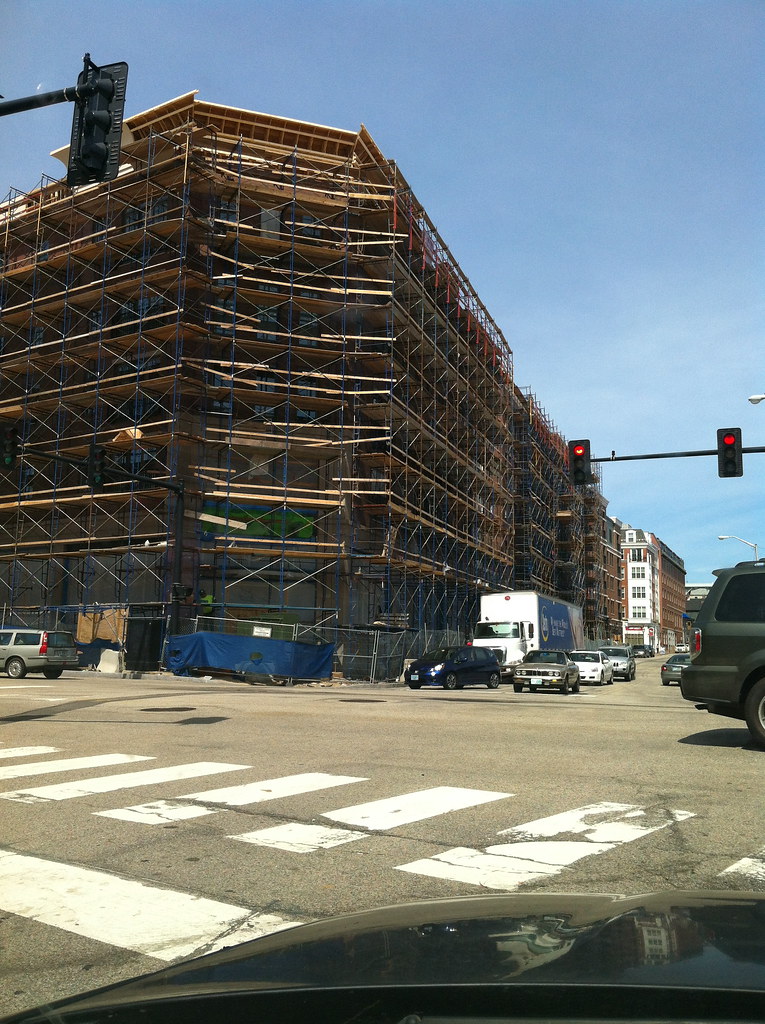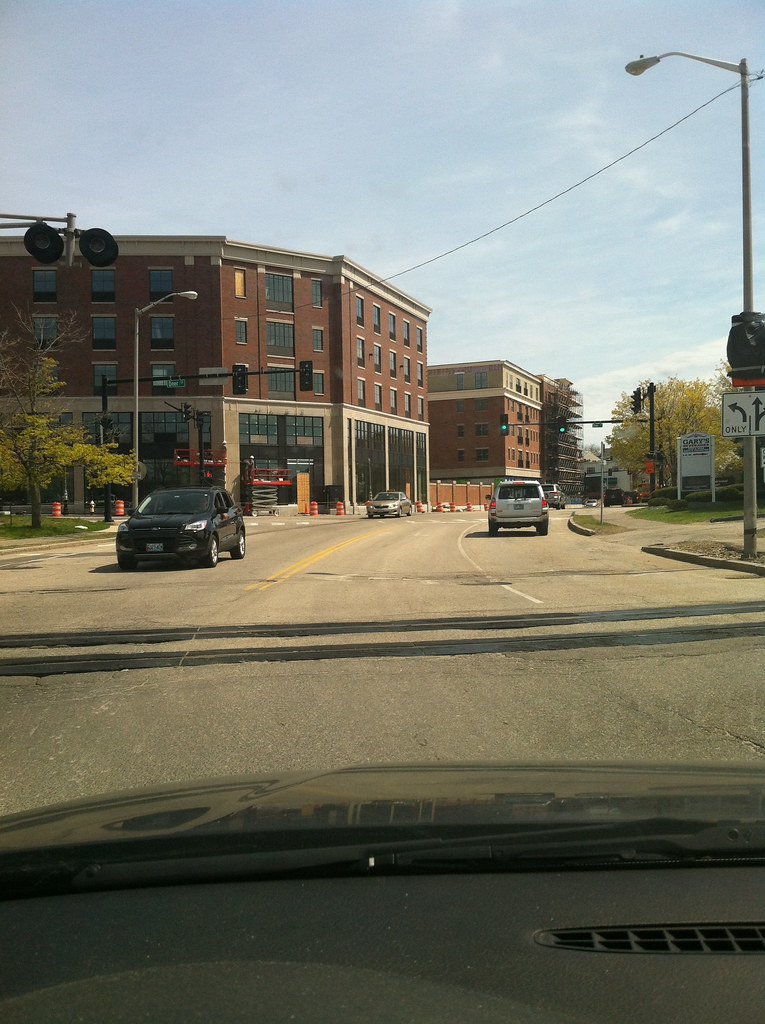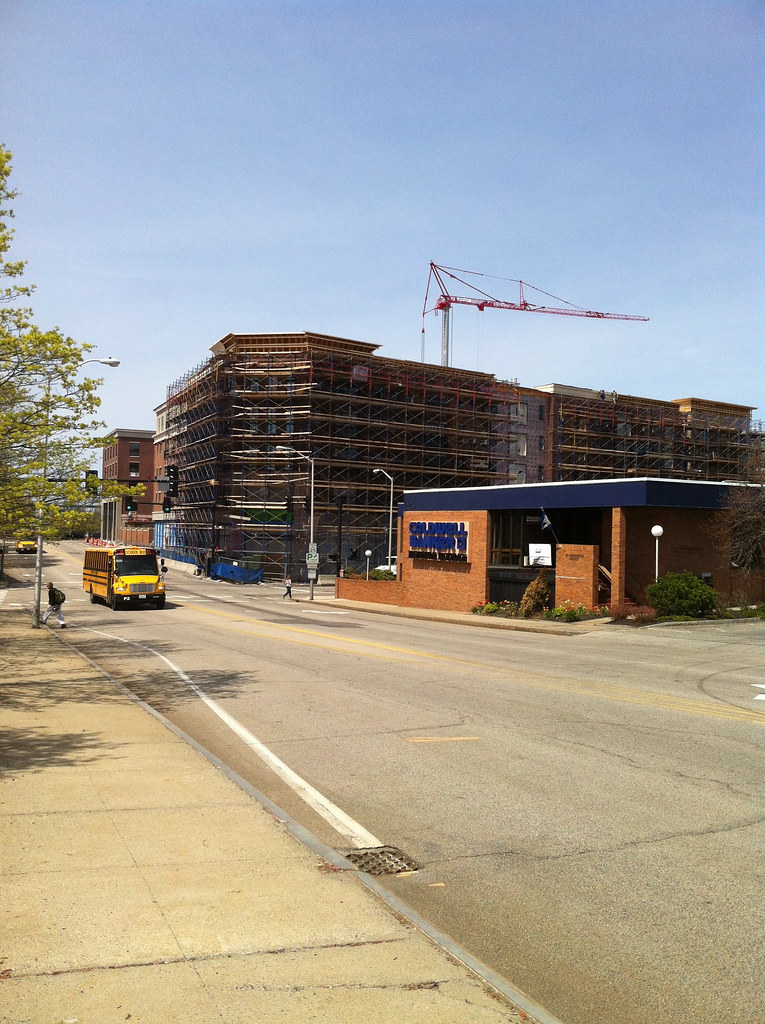I am still hopeful that something a better gets proposed with the bridge. I dislike the idea of the exact same thing going up, I would much rather see some new design. However this one is not at all inspired. Again for some reason I am really against the color too--why are all of our bridges the same color green?
You are using an out of date browser. It may not display this or other websites correctly.
You should upgrade or use an alternative browser.
You should upgrade or use an alternative browser.
Portsmouth
- Thread starter Smuttynose
- Start date
FrankLloydMike
Active Member
- Joined
- Jun 24, 2010
- Messages
- 514
- Reaction score
- 0
This is the first of I've heard of this, but according to the Union Leader, Strawbery Banke is attempting to recreate a bit of an actual neighborhood within the museum by renting out a few residences in some of the restored buildings:
Strawbery Banke getting that lived-in feel
Major project:
Homes in the museum being restored for current use are already rented out.
By GRETYL MACALASTER
Sunday News Correspondent
PORTSMOUTH — Three of the 10 homes being restored as part of Strawbery Banke Museum’s plan to re-create a working neighborhood have attracted people eager to become part of the community, an official said.
“The people who are moving here have just embraced living here. They love it, they eat it up, they are becoming members of the institution, helping with events,” said Rodney Rowland, director of special projects at the museum. “They are just becoming real patrons of Strawbery Banke Museum. I just didn’t expect that.”
The neighborhood being created is “incredible,” he added. The historic homes that now make up the 10-acre property were once filled with families, businesses and apartments.
In 1958, a group of residents saved the area from urban renewal and the historic walking museum was created.
A little more than two years ago, the museum took an inventory of the 38 homes on the property and realized much of the space could be put to better use.
Museum President Larry Yerdon and others envisioned the current neighborhood revival, including restoration of the buildings’ exterior to a period of historical significance. All the while, the museum has remained open to the public.
“We made a convincing case that this was one way to stabilize the museum in the long run,” Yerdon said.
“First of all, it re-creates a community that was here from 1630 to 1958 with a mix of commercial and residential properties. Second, it aids the (museum’s) financial bottom line as a significant source of income. Finally, it helps get all the buildings restored,” Yerdon said.
The museum expects to produce an additional gross income of about $300,000 through the Heritage House Program, but needs to raise about $3 million to make it a reality. Yerdon said 60 percent will come as cash donations and 40 percent as inkind donations.
So far, the museum has raised more than $1 million and is nearing completion on Phase 2 of the project. Three of the 10 homes included in the Heritage House Program have been fully restored and are rented. Several others are still in progress.
The Ruben Shapley House now contains offices, the Wheelwright House has an occupied two-bedroom apartment and the Winn House has a recently completed two-bedroom apartment on the second floor.
The exterior of Winn has been restored to its appearance in 1958, when the home came to the museum. It stands in stark contrast to the attached Yeaton House, which has not yet been restored.
Hough House is home to four commercial office spaces on one side and houses summer museum interns on the other.
Nearby, the repointing of the Shapley Townhouse is nearing completion, as is work on 12 to 14 office spaces inside.
Two studio apartments on the second floor of the Lowd House are expected to be completed by the end of May.
Underground utilities are also part of the project. Rowland said much of that was completed recently, as well.
“We are on track to wrap up the existing work by September and have it all on the market or rented. Then we will start looking at the next phase,” Rowland said.
The last phase will focus on three remaining houses — Yeaton, Yeaton-Walsh and Penhallow.
For more information about the Heritage House Program, go to theheritagehouses.org.
Just visited Portsmouth--what an awesome small city. I could certainly pick Portsmouth over living in Boston.
I know what you mean. My girlfriend and I run up there a lot fridays and have a better time then the average night out in Boston. Great little city with an excellent vibe.
I know what you mean. My girlfriend and I run up there a lot fridays and have a better time then the average night out in Boston. Great little city with an excellent vibe.
Live in Portsmouth (and the advantages that New Hampshire offers in terms of taxes
What is Portsmouth economy built on, besides hospitality and tourism? Seems like their is quite of bit of money that resides in the area.
What is Portsmouth economy built on, besides hospitality and tourism?
Like any city in America today, the biggest employers are probably hospitals and government.
In terms of value-add jobs (which hospitals definitely are as well), UNH in Durham is a big employer. There are a number of large/successful businesses HQ'd in the area as well:
-Timberland (footwear)
-Smuttynose Brewing (booze)
-Stonyfield Farm (dairy)
-Fisher Scientific (now merged into Thermo Fisher and based in Waltham - however, I'm sure Fisher retains operations in Portsmouth)
-Margarita's (restaurant chain)
TheBostonian
Active Member
- Joined
- May 25, 2006
- Messages
- 348
- Reaction score
- 1
Like any city in America today, the biggest employers are probably hospitals and government.
In terms of value-add jobs (which hospitals definitely are as well), UNH in Durham is a big employer. There are a number of large/successful businesses HQ'd in the area as well:
-Timberland (footwear)
-Smuttynose Brewing (booze)
-Stonyfield Farm (dairy)
-Fisher Scientific (now merged into Thermo Fisher and based in Waltham - however, I'm sure Fisher retains operations in Portsmouth)
-Margarita's (restaurant chain)
And nearly 5,000 workers at the nearby shipyard: http://www.navsea.navy.mil/shipyards/portsmouth/Pages/Facts.aspx
Like any city in America today, the biggest employers are probably hospitals and government.
In terms of value-add jobs (which hospitals definitely are as well), UNH in Durham is a big employer. There are a number of large/successful businesses HQ'd in the area as well:
-Timberland (footwear)
-Smuttynose Brewing (booze)
-Stonyfield Farm (dairy)
-Fisher Scientific (now merged into Thermo Fisher and based in Waltham - however, I'm sure Fisher retains operations in Portsmouth)
-Margarita's (restaurant chain)
Interesting...I've heard that Portsmouth a sizable (relative) tech sector.
Portsmouth is a GREAT small city, with a lot of new development going on right now. I work on the old Pease Air Base and there are a lot of Tech companies here. They've done a great job re-purposing the base into a great place to work, with a lot of companies and job opportunities.
portlandneedsnewarena
Active Member
- Joined
- May 25, 2006
- Messages
- 233
- Reaction score
- 229
A very nice project in the works for Portsmouth called 233 Vaughan Street. It can be viewed at cjarchitects.netPortsmouth is a GREAT small city, with a lot of new development going on right now. I work on the old Pease Air Base and there are a lot of Tech companies here. They've done a great job re-purposing the base into a great place to work, with a lot of companies and job opportunities.
UNHwildcat
New member
- Joined
- Apr 8, 2014
- Messages
- 7
- Reaction score
- 0
UNHwildcat
New member
- Joined
- Apr 8, 2014
- Messages
- 7
- Reaction score
- 0
Portwalk Place
UNHwildcat
New member
- Joined
- Apr 8, 2014
- Messages
- 7
- Reaction score
- 0
UNHwildcat
New member
- Joined
- Apr 8, 2014
- Messages
- 7
- Reaction score
- 0
The amount of developement going on down there is just amazing! From urban infill to filling up open spaces outside of the downtown core, I'm impressed. I can remember when I was a kid my parents would go into Portmouth all the time from 1-95 and the first thing you saw were parking lots (this is pre-Sheraton) and the grocery store that was later torn down. I wish the city would allow a few 8-10 story buildings to complement the church steeples.
Jouhou
Active Member
- Joined
- Nov 3, 2015
- Messages
- 683
- Reaction score
- 51
Got a notice in the mail today: http://portsmouthlistens.org/
They seem to be accepting input from people who work and play here too so if any Bostonians want to help us be heard over our very vocal NIMBYs please go right ahead and sign up.
In response to discussion over who our largest employers are:
http://www.city-data.com/us-cities/The-Northeast/Portsmouth-Economy.html
There is a lot of biotech industry here, no one's specifically mentioned it yet. IE: Lonza
I'm a government worker though.
They seem to be accepting input from people who work and play here too so if any Bostonians want to help us be heard over our very vocal NIMBYs please go right ahead and sign up.
In response to discussion over who our largest employers are:
http://www.city-data.com/us-cities/The-Northeast/Portsmouth-Economy.html
There is a lot of biotech industry here, no one's specifically mentioned it yet. IE: Lonza
I'm a government worker though.
Portsmouth is a great city with a lot of development going on for its size. The downtown is truly a gem and has really changed over the last few years. And there is still some larger projects on the horizon. I think it is one of the best small cities in New England.
iamdjmichael
Active Member
- Joined
- Aug 4, 2014
- Messages
- 165
- Reaction score
- 130
I honestly feel like Portsmouth is the only NH city that is really doing "urban" right. The new developments in Nashua and Manchester are far too suburban looking and often miss opportunity.














